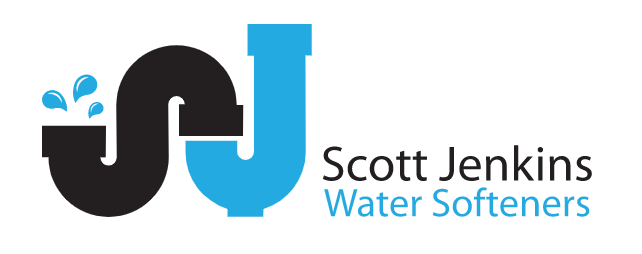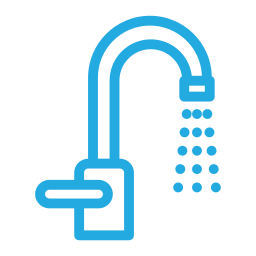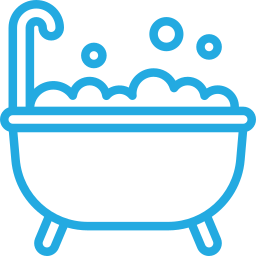Reverse Osmosis and Remineralisation – How it offers the best of both worlds in drinking water quality
Short story | Full story | Conclusion
- Reverse Osmosis (RO) is a superior form of water filtration
- It removes virtually all pollutants from your drinking water
- Staged filtration process on a microscopic scale – flushing out 99% of all known contaminants
- These include dangerous heavy metals, viruses and bacteria
- Remineralisation is a handy extra to the RO process – returning healthy minerals to drinking water
- RO and remineralisation offer the best of both worlds – healthy, great tasting drinking water
When it comes to filtering your water, the reverse osmosis process provides just about the best type of filtration going. It’s highly effective at removing virtually every known pollutant you are likely to find in the mains water supply.
The RO process uses a semi-permeable membrane to separate water molecules from other substances, purifying the water.
But because it removes just about everything from the water, it flushes away of minerals, like calcium and magnesium, which are good for our health.
RO water remineralisation is the process of adding back some of the minerals stripped off from the water during the RO filtration process, balancing the pH level of the RO water and enhancing its mineral content.
This means you can benefit from pollutant-free water, whilst still benefitting from essential minerals.

The full story
Reverse Osmosis (RO) is a highly efficient type of filtration which, when used to filter water, pretty much removes anything that’s contained in the water other than the water itself!
Whether your supply comes via the mains or another source, such as a borehole or well, the process of RO is guaranteed to provide you with pollutant free, fine quality water that’s perfect for drinking or cooking.
To avoid any confusion, RO is used specifically in the filtration of water and has nothing to do with making water soft (which is the job of a water softener).
What is Reverse Osmosis?
Let’s begin by covering osmosis – which is the exact opposite of reverse osmosis! Osmosis is a process by which molecules of a solute pass through a semi-permeable membrane from a less concentrated solution into a more concentrated one. The fluid involved doesn’t necessarily have to be water, but it usually is.
Some molecules in the water pass through the membrane, whilst others don’t. The process of osmosis continues until the solutions on either side of the membrane are in a state of equilibrium. This is how plants take water on board, via their roots.
With reverse osmosis, however, this process is turned on its head. In RO, an external force greater than the osmotic pressure is required to force a solute across a membrane. Again, working on the basis that the solution is water, the pre-filtered water containing any number of contaminants, such as potentially harmful particulates and bacteria, is forced through a semi-permeable membrane. The membrane catches the undesirable impurities PFAS In Water, allowing the purified water to pass through.
How does Reverse Osmosis Work?
In the household environment, using RO filtration, the mains water is directed through a pre-filter which gets rid of not just the contaminants, but also those horrible chlorine tastes and odours you often can get with unfiltered tap water. Honestly, the water churned out by the mains water companies these days leaves a lot to be desired!
Anyway, under pressure, the water then passes through a semi-permeable membrane, where most of the dissolved solids and bacteria are flushed out to the drain.
The filtered water is then directed to a storage tank, until it is ready for drinking. The final piece of the RO process involves an activated carbon absorption block filter, which removes any residual smells and tastes, before it flows out through the tap to your glass, or whichever receptacle you are using.
These high-quality RO filters are designed to flush out up to 99% of all-known contaminants, including lead – right down to the most minute amounts of medication, like ibuprofen or contraceptive pills, which may be present in the supply.
This is filtration on a microscopic scale. By the time these filters and membranes have worked their magic, no particles larger than 0.0001 microns – the pore size of the membrane – will remain. And if you think that sounds small, well it is! One micron equates to approximately 0.00004 inches, that’s about 1/75th of the width of a human hair. So, a thousandth of a micron is infinitesimally small.
Which contaminants do RO systems remove from water?
- Salts and nitrates.
- Heavy metals, like copper and lead.
- Reduces mineral content from hard water.
- Some organic chemicals like fluoride, which is added to tap water.
- Protozoa such as Giardia and Cryptosporidium.
- Viruses like Hepatitis A, Norovirus and Rotavirus.
- Bacteria such as Salmonella and E. coli.
- Reduces arsenic.Another thing worth noting about reverse osmosis water filtration systems is that they produce a small amount of wastewater as part of the filtration process. This wastewater carries away the contaminants that have been removed from the water that passes through the system.
What is Remineralisation?
Whilst Reverse Osmosis is a fool proof way of purifying water for drinking and cooking, the downside is that because it takes literally everything out of the water, it does flush away certain minerals, like calcium and magnesium, which are good for our health. Remineralisation is the process used to restore these lost minerals.
As RO can also reduce the pH level in water which can make it acidic, remineralisation helps restore it to a more balanced level of between 7.0 and 7.5 pH which many people find far more acceptable to drink.
What are the benefits of water remineralisation before drinking?
For optimum drinking water, reverse osmosis and mineralisation actually provide the best of both worlds.
A healthy thirst quencher
When the pH level in water is increased, it automatically becomes ionised, which quenches the thirst faster, so you don’t end up drinking more than the body needs. Remineralised water also carries safe electrolytes, which are also important for maintaining the body’s equilibrium.
Contains essential minerals
Remineralisation restores essential minerals, like calcium which is good for bone strength and warding off conditions such as osteoporosis, especially in women. Sodium is another mineral which is restored after this process, which is good for regulating blood pressure.
Great tasting water
Since remineralisation is designed to blend quality and purification, it results in just about the best tasting water you can get. Perfect for drinking cold, in tea, coffee, for cooking and even preparing baby food.
Conclusion
Reverse Osmosis is a highly effective and popular method of water filtration because it means you don’t have to drink contaminated water with loads of horrible chemicals and bacteria in it. That said, if it hasn’t been remineralised, then you are foregoing certain healthy minerals, as mentioned earlier. So, we’d recommend that you engage both reverse osmosis and remineralisation, to benefit from pollutant-free water, full of all the essential minerals we need.
Is Reverse Osmosis Filtration available through SJ Water Softeners? Yes! The RO systems we sell are arguably the best two on the market – made by Kinetico (the K2 and K5 range) and EcoWater (ERO series). Both will provide you with up to 50 gallons of ultra-pure water on demand, every day plenty of options on pre, post and remineralisation filters.
If you want to add a pH-balancing or remineralisation filter, you can do so without needing to replace the whole system. It’s a simple mix-and-match approach to suit your requirements. Prices start from just £67.00 for these cartridges and they should only need changing once a year.
For any assistance with reverse osmosis water filtration, call us on 01243 607494 or email: scott@sjbs.info.
At Scott Jenkins Water Softeners, we offer an extensive range of water softeners and water filters for homes and businesses across much of the south-east, especially East and West Sussex, Hampshire, Surrey and into London.










